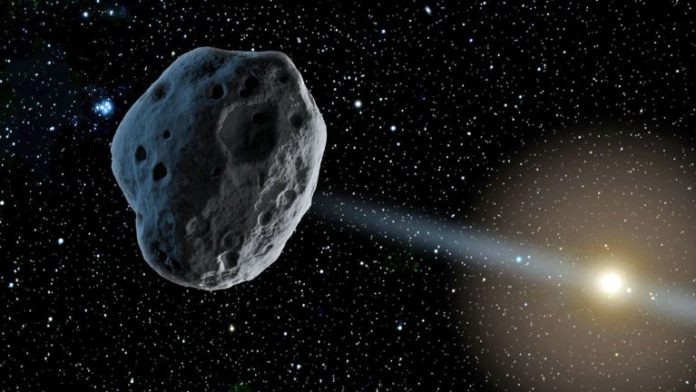
This idea really is quite a fascinating one.
Currently a trip to Mars would require large amounts of air, water and other resources to sustain human life but would also expose travellers to harmful levels of radiation.
A wonderful solution has been proposed in a new paper recently published by researchers from Ukraine.
They propose that asteroids which already travel relatively close by Earth, Mars and even Venus already could be used to hop between the planets.
They are already making the journey anyway and so perhaps the cosmos already provides the solution to interplanetary travel.
After a return to the Moon, the red planet Mars is next on the list for human exploration. On average it is 225 million km away so a round trip would require astronauts to be away from home for about 3 years!
Spending this length of time in space raises a number of serious health risks many of which are caused by prolonged exposure to radiation and microgravity.
Over time, muscles and bone density will decline so that the skeletal part of the body will no longer bear enough weight to sustain a return to Earth’s gravity.
The cardiovascular system would adjust to microgravity too making heart issues likely upon return. There would be an increased risk of cancer and damage to the nervous system as a result of the prolonged exposure to radiation.
The list goes on!
The paper recently authored by A. S. Kasianchuk and V.M. Reshetnyk from the National University of Kyiv in Ukraine they report upon their analysis of the orbit of more than 35,000 near-Earth asteroids.
They have been looking for the possibility of successive approaches to all pairs of planets Earth – Venus and Earth – Mars within a time range of 2020 to 2120.
If successive passes exist then why not, the team suggest, use the asteroids as interplanetary busses to provide a fast transfer between the planets, possibly even as fast as 180 days. 120 candidates were discovered for Earth-Mars, Earth-Venus, Mars-Earth, Venus-Earth, and even Mars-Venus and Venus-Mars!
It is a tantalising prospect that instead of mounting a massive rocket based mission to get to Mars or even Venus, that the use of Near Earth Objects (NEO) might provide a natural solution.
They would certainly provide a fast transfer between planets but would still require some form of technological solution to radiation protection. The quicker the journey, the lower the risk from radiation so careful selection is an important part of the process.
The team have produced quite an extensive list of potentials NEO’s for transfers between the inner planets but as new NEO’s are discovered the list will grow.
The work provides a snapshot in time of the possible candidates but it requires on going work to keep the list up to date as more asteroids are discovered and orbital elements are refined. NASA’s NEO Surveyor mission has been set the challenge to find more than 90% of all NEO’s larger than 140 metres in diameter.
This will certainly provide a useful resource to the study.
Among the asteroids identified, size and proximity to the target planet needs to be considered. Analysis of the overall mission needs to be carefully worked too. If a spacecraft stays in open space for a longer period of time than inside a NEW for example, the effectiveness of the approach must be carefully weighed up.
It’s an interesting proposition though. With appropriate technological solutions, a carefully selected asteroid can serve not only as a fuel station but also, if shelter is taken beneath the surface for example in caves, could offer radiation protection too.
There are significant challenges ahead before this all becomes a reality but with the ever increasing drive to reduce the cost and ecological impact of space flight it is one that most definitely needs further careful analysis.
Written by Mark Thompson/Universe Today.



